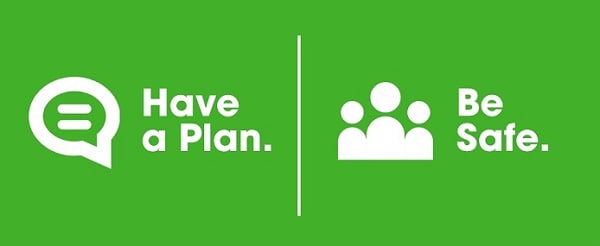Published on 7/2/2021
Should Hurricane Elsa hit the Gulf Coast, Cricket Wireless is ready to help our impacted customers weather the storm.
We’re currently topping off generators at our cell sites with fuel. We also have staged emergency response equipment and technicians in strategic locations, if needed. And our national reliability center is monitoring outages for quick action.
We’ve also improved the network redundancy in storm-prone areas. In fact, prior to the storm season, more generators were installed at critical cell towers and switching facilities. In addition, electronics key to network operations were moved above expected flood levels.
The National Disaster Recovery team keeps service going until local network personnel, regional emergency operations centers and local response centers make permanent repairs.
Safety Tips
Just as we prepare our networks and personnel, Cricket encourages customers to consider the following recommendations in the wake of the storm.
- Keep your mobile phone battery charged. In case of a power outage, have another way to charge your phone like an extra battery, car charger or device-charging accessory. Sales tax holidays are a great time to stock up on cell phone accessories.
- Keep your mobile devices dry. The biggest threat to your device during a hurricane is water. Keep it safe from the elements by storing it in a baggie or some other type of protective covering.
- Have a family communications plan. Choose someone out of the area as a central contact. If separated, that is the person family members should contact. Practice your emergency plan in advance.
- Program all of your emergency contact numbers and e-mail addresses into your mobile phone. Numbers should include the police department, fire station and hospital, as well as your family members.
- Forward your home number to your mobile number in the event of an evacuation. Call forwarding goes out from the telephone central office. This means you will get calls from your landline phone, even if your local telephone service is down. If the central office is not operational, services such as voicemail and call forwarding may be useful.
- Track the storm and access weather information on your mobile device. Many homes lose power during severe weather. If you have a working mobile device with Internet access, you can watch weather reports.
- Camera phones provide assistance. If you have a camera phone, take, store and send photos and video clips of damage to your insurance company.
- Use location-based technology. Avoid traffic from downed trees and find evacuation routes.
- Where available, prepare for the ability to text 911 before the storm approaches by enabling location services on your smartphone. (If text to 911 isn’t supported in your area, you’ll receive a text message back telling you to call 911.)
Keep the Lines Open for Emergencies
Evacuations, the storm event, and aftermath all tax network resources. These tips help keep lines open for emergency personnel:
- Text messaging. During an emergency situation, text messages may go through more quickly than voice calls because they require fewer network resources. All Cricket Wireless smartphones are text capable. Depending on your text or data plan, additional charges may apply.
- Be prepared for high call volume. During an emergency, many people are trying to use their phones at the same time. This may congest the network, leading to “fast busy” signals on your wireless phone or a slow dial tone on your landline phone. If this happens, hang up, wait several seconds and then try the call again. This allows your original call data to clear the network before you try again.
- Keep non-emergency calls to a minimum. Limit your calls to the most important ones. Chances are many people will try to make calls to loved ones, friends and business associates.
Manage Your Phone in Emergencies: It’s all about Power
Manage and maximize usage of your device’s power:
- Keep your phone fully charged for as long as you can
- Turn on power saving mode
- Turn down/off applications that are high power users
- Turn off as many of the following items as you can: Bluetooth, Wi-Fi, LTE, NFC, GPS
- Close down apps you might not have realized are still open
- Turn down brightness
- If getting low on battery power, and you think it will be awhile before you have power, turn off your phone and use it only to check in periodically
- Temporarily turn off auto notifications
Remember:
- When power is out, you can recharge your phone in your car with an automobile charger
- Keep a backup battery or other type of portable power and standard charger, with a charging cable, in your emergency kit
- You can buy rugged waterproof cases for many phones or even keep your phone dry in a plastic bag
*Please bookmark this page for regular updates from Cricket on store closures in affected areas.*



